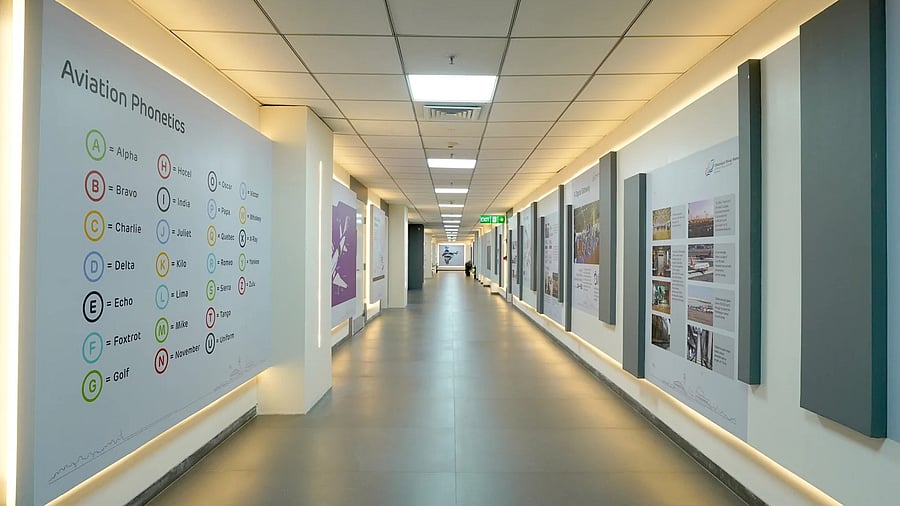
Hyderabad: In the fourth week of September, Google withdrew its $1 billion proposal to build an artificial intelligence (AI) data centre in Franklin Township, Indianapolis in the US. The last-minute decision came just minutes before a scheduled city-county council vote on September 22, 2025. The vote was widely expected to reject the proposal after sustained opposition from local residents and council members.
Organised under the banner 'Protect Franklin Township', residents raised strong objections over the project’s expected water and energy consumption, fearing the massive facility would overburden local infrastructure and inflate utility bills.
Ironically, Indianapolis remains one of America’s largest data centre hubs, yet it also reflects a growing domestic backlash against hyperscale projects. Even as US communities push back, India is moving in the opposite direction gearing up to welcome data centres at an unprecedented pace.
A recent report by Toronto-headquartered Colliers paints a picture of India’s data centre (DC) sector entering a transformative phase. As of April 2025, the country’s total installed capacity stood at 1,263 megawatts (MW), having grown more than fourfold over the past six to seven years. By 2030, the capacity is projected to cross 4,500 MW, attracting investment of $20–25 billion over the next 5-6 years.
This dramatic growth is driven by several converging factors like surging demand for digital and cloud services, the rapid adoption of AI and Internet of Things (IoT) technologies, and rising internet penetration across urban and rural India. Add to this a supportive policy push from both central and state governments, and the stage is set for India’s data centre ecosystem to become one of the largest in Asia.
At the city level, Mumbai dominates the space with a 41% share of total capacity, followed by Chennai (23%) and Delhi NCR (14%). The resulting expansion in physical space has tripled the real estate footprint of data centres across India’s top seven markets, reaching 16 million square feet by April 2025.
Data centres - essentially vast warehouses of interconnected servers, routers, and switches - form the beating heart of the digital economy. From streaming platforms and cloud computing to AI model training and cryptocurrency mining, they keep the online world running around the clock.
The environmental debate playing out in the US offers a cautionary tale for India. According to the Washington-based non profit Environmental and Energy Study Institute (EESI), the US hosted 5,426 data centres by March 2025. These facilities consumed about 17 gigawatts (GW) of electricity in 2022, up from 11 GW in 2018, when they accounted for nearly 2% of the country’s total electricity use and emitted 31.5 million metric tonnes of greenhouse gases.
By 2023, total consumption had skyrocketed to 176 terawatt-hours (Twh) equivalent to 4.4% of US electricity use while carbon emissions tripled to roughly 105 million metric tonnes. Over half of that electricity still comes from fossil fuels, intensifying the sustainability challenge.
Estimates suggest data centres’ power demand will soar to 130 GW (1,050 TWh) by 2030, accounting for nearly 12% of US electricity consumption. With such numbers, sustainability and community impact have become central to the debate around every new project.
Amid these concerns abroad, Google recently announced plans for a hyperscale AI and data hub in Visakhapatnam also called Vizag, Andhra Pradesh. The proposed 1-GW facility, the largest of its kind in India, will anchor what state officials call a green data corridor along the coast.
“Vizag offers a natural advantage for sustainable AI infrastructure with its port connectivity, renewable energy base, and coastal grid,” said Syam Thommandru, London-based Director of Global Alliances at the US cybersecurity giant Zscaler. “The Google project is a major milestone in India’s digital journey,” he told DH.
India already has over 268 major data centres spread across Mumbai, Hyderabad, Delhi NCR, Bengaluru, and Chennai. Each hyperscale facility consumes as much electricity as about one lakh households and millions of litres of water per day, a reminder that the digital boom also strains essential natural resources.
Telangana, with 33 active data centres, is recognised as one of India’s most mature DC markets. Its progressive initiatives such as the T-Cloud framework, competitive power tariffs, and the Cybersecurity Centre of Excellence have positioned Hyderabad as a top destination for AI-ready and sovereign cloud infrastructure, added Thommandru.
“As capacity grows, priorities must evolve,” he explained. “We need renewable integration, hydrogen-based energy resilience, and water-saving technologies like closed-loop cooling. The age of AI will be defined not by compute power but by energy. Andhra Pradesh and Telangana can become twin pillars of sustainable AI infrastructure,” Thommandru told DH.
Not everyone shares that optimism. Critics, including former bureaucrat EAS Sarma, have questioned the feasibility and environmental cost of Google’s billion-dollar Vizag project.
“Even in the US, a city rejected Google’s data centre over water and energy concerns. How can Andhra Pradesh provide 2.7 to 4.1 million gallons of water a day for a single 1-GW data centre when local reservoirs are barely sufficient for residents and industries?” Sarma asked. Talking to DH he called the Andhra government to reconsider the project.
Government documents estimate that Google’s three planned campuses in Vizag would each require 5,000 cubic meters per day (CMD) of water and 465 MW, 929 MW, and 697 MW of power, respectively.